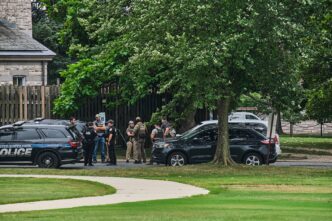A recent study from the University of Miami has brought to light a concerning issue affecting nearly three dozen oceanfront buildings in South Florida. The research indicates that structures from Miami Beach to Sunny Isles Beach are undergoing subsidence, with the ground beneath them sinking between two to eight centimeters.
The University of Miami, through its Rosenstiel School of Marine, Atmospheric, and Earth Science, conducted a detailed analysis revealing ground subsidence in 35 buildings. This study is a result of satellite technology that measures minute displacements by examining stable elements such as balconies and rooftop air conditioners from 2016 to 2023. The findings, published in the journal Earth and Space Science, underscore significant subsidence activities, particularly in Sunny Isles Beach, which saw the most marked effects. Meanwhile, areas like Surfside, where the tragic collapse of the Champlain Towers South occurred in 2021, showed similar issues with subsidence. Additionally, minor subsidence was reported in two Miami Beach buildings and one in Bal Harbour.
The purpose of this study, as explained by Professor Gregor Eberli, a co-author, was to evaluate the coastal ground stability and examine how high-rise buildings react over time. Eberli emphasized that the aim was not to cause alarm but to present the factual state of subsidence and quantify its extent. He further mentioned that the study serves to familiarize the public with the satellite technology used in gathering these insights.
Reaction to the research has been varied. Sunny Isles Beach officials pointed out that Florida and Miami-Dade County have stringent building codes and reinspection policies to ensure structural integrity. They confirmed adherence to these regulations, providing assurance about the safety and stability of their structures. However, some architects, like Kobi Karp, argued that such data should be verified by multiple independent parties to establish accurate conclusions. Karp also expressed confidence in the current structural integrity of the buildings mentioned in the study, given the rigorous inspection processes in place.
Co-author Esber Andiroglu remarked that the study’s insights aim to assist architects and engineers in managing resource preservation and controlling repair costs. Andiroglu assured that subsidence is a natural process considered during the design phase, emphasizing that it generally does not affect occupants’ safety.
Local leaders, including Miami Mayor Francis Suarez and Miami-Dade Mayor Daniela Levine Cava, acknowledged the study’s significance. They assured residents that the findings are not indicative of any immediate risk, as the subsidence process is gradual and not abrupt. The study’s authors indicate ongoing investigations will continue.
The study from the University of Miami highlights a natural phenomenon affecting South Florida’s skyline but reassures that current safety measures and regulations provide ample protection. As research continues, stakeholders remain actively engaged in ensuring the region’s architectural stability.
Source: Nbcmiami








